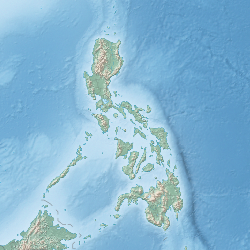 | |
| Geography | |
|---|---|
| Coordinates | 14°25′27″N122°02′14″E / 14.4242°N 122.0372°E |
| Area | 4.24 km2 (1.64 sq mi) |
| Highest elevation | 8.74 m (28.67 ft) |
| Administration | |
Philippines | |
| Region | Calabarzon |
| Province | Quezon |
| Municipality | Polillo |
| Barangay | Balesin |
| Demographics | |
| Population | 1,207 (2020) |
| Additional information | |
 | |
Balesin Island is a private tropical island and barangay off the eastern coast of Luzon in the Philippines. It is administered as part of the municipality of Polillo of Quezon province. [1]



